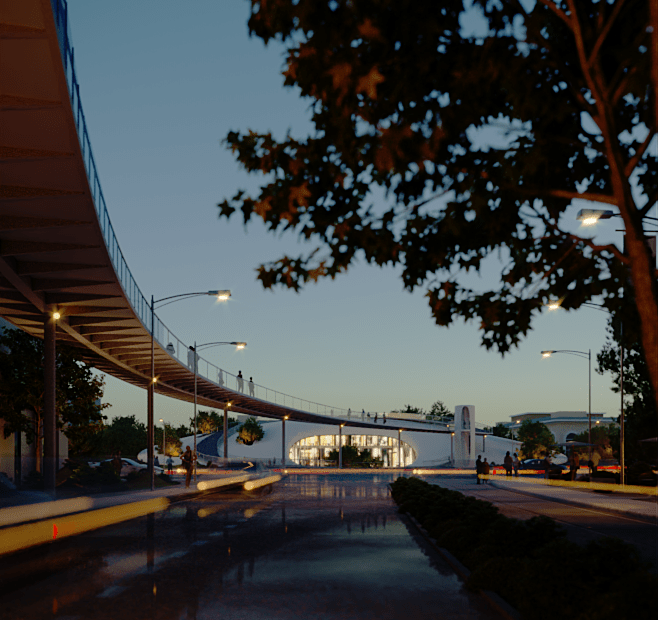The latest darling of the sustainability movement is regenerative design. The goal is to construct a structure that is self-sustaining and has a good influence. It necessitates that architects adopt a vision of architecture that is “doing good” rather than just “doing better.”
1) It’s more than just an environmentally friendly structure.
Regenerative design advocates agree that the term “sustainability” no longer adequately describes our current environmental situation. It’s also possible that the standard was never the proper one, to begin with. Sustainable structures, after all, minimize but do not eliminate the usage of scarce resources.
For no damage done, sustainability began as an equilibrium. But soon it became routine, like a 10% reduction in water usage. The regenerative design establishes a pre-industrial, pre-agricultural, and pre-development ecological benchmark. In all areas, this signifies a net positive result.
The phrase “sustainable” has worn out its welcome and is no longer capable of solving the difficulties we face today. Regenerative design is more of a mindset and approach than a list of accomplishments or cost savings. Regenerative design goes beyond net-zero to have a beneficial impact on the environment. Nature does it all the time; we simply need to be a little more creative with our designs.
Remember that buildings fall on a spectrum: code compliance is the lowest level, high performance implies resource efficiency, sustainability means not taking more than is required, restorative means to restore, and regenerative means to regenerate. We must be regenerative if we are to undo the damage that has been done to the world.
2) Regenerative design provides a positive feedback loop.
The previous motto of “recycle, reduce, reuse” is replaced by “restore, renew, and replenish” in regenerative design. Consider a structure that actively contributes to the environment.
If all we want to do is cause less harm, that’s the best we can hope for. We won’t have the motivation to do anything more than reduce our reliance on electricity and fossil fuels. We’ll be aware of water, but we won’t collect or recycle it. We won’t be forced to think about embodied carbon either. We are unable to stop here.
Regenerative design isn’t simply about preserving the environment; it’s also about rescuing people. We need to demand more from architectural design. This entails putting in place architectural techniques to combat air pollution, clean water, restore forests, and reduce the heat island effect.
3) Every design decision is significant.
Architects are being pushed to adopt new planning approaches through regenerative design. Everything from site investigation to engineering and material selection requires a holistic strategy. However, this is an opportunity to be creative.
The first step is to recognize that every decision we make, from building orientation to ceiling tile selection, has an impact. Architects are problem solvers who design solutions to problems. The regenerative design forces us to deliver the most to the client while reducing our environmental impact.
We can’t just adjust maladaptive design; we have to break it down and start afresh. Generally, we don’t use a sketch or aesthetics in regenerative design. It begins with a thorough examination of the physical environment, including site hydrology, community health, social equality, carbon cycles, and biodiversity. The regenerative design employs a level of scientific research and biology not seen in traditional projects.
Moreover, stopping construction on greenfield lands is one approach to move the needle. We can’t keep obliterating natural patterns in favor of man-made constructions. We can save and renovate several existing structures. Brownfield lands are just waiting to be reclaimed. We should prioritize the densification of metropolitan areas.
4) Create today’s designs with the future in mind.
Green facilities will almost certainly become a need rather than a nice gesture in the future. Carbon regulations, electrification, and extreme weather events have all highlighted the importance of buildings as part of the solution. How can we prepare a project for the unknowns of the next 20, 50, and 100 years?
We can plan such that a project can progress into net-zero even if it doesn’t have the full funding today. This necessitates a shift in our perceptions of what constitutes “excellent” architecture and gardening. It may be as simple as eliminating turf grass, which has no ecological advantage; it may not be the conventional aesthetic, but the alternatives may be more appealing in certain ways.
We should plan for long-term resiliency. Regenerative design is a snapshot in time; regenerative development is a process that takes place over time. We need projects that can act as stewards for changing metrics. Buildings must be adaptive to future changes in relative humidity and temperature, as well as social equity and ethnography.
Read more on INJ Architects:
